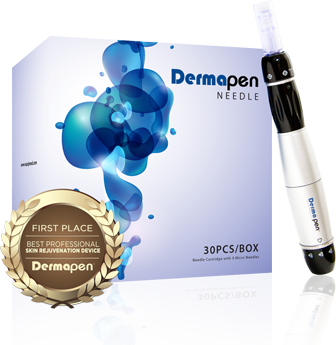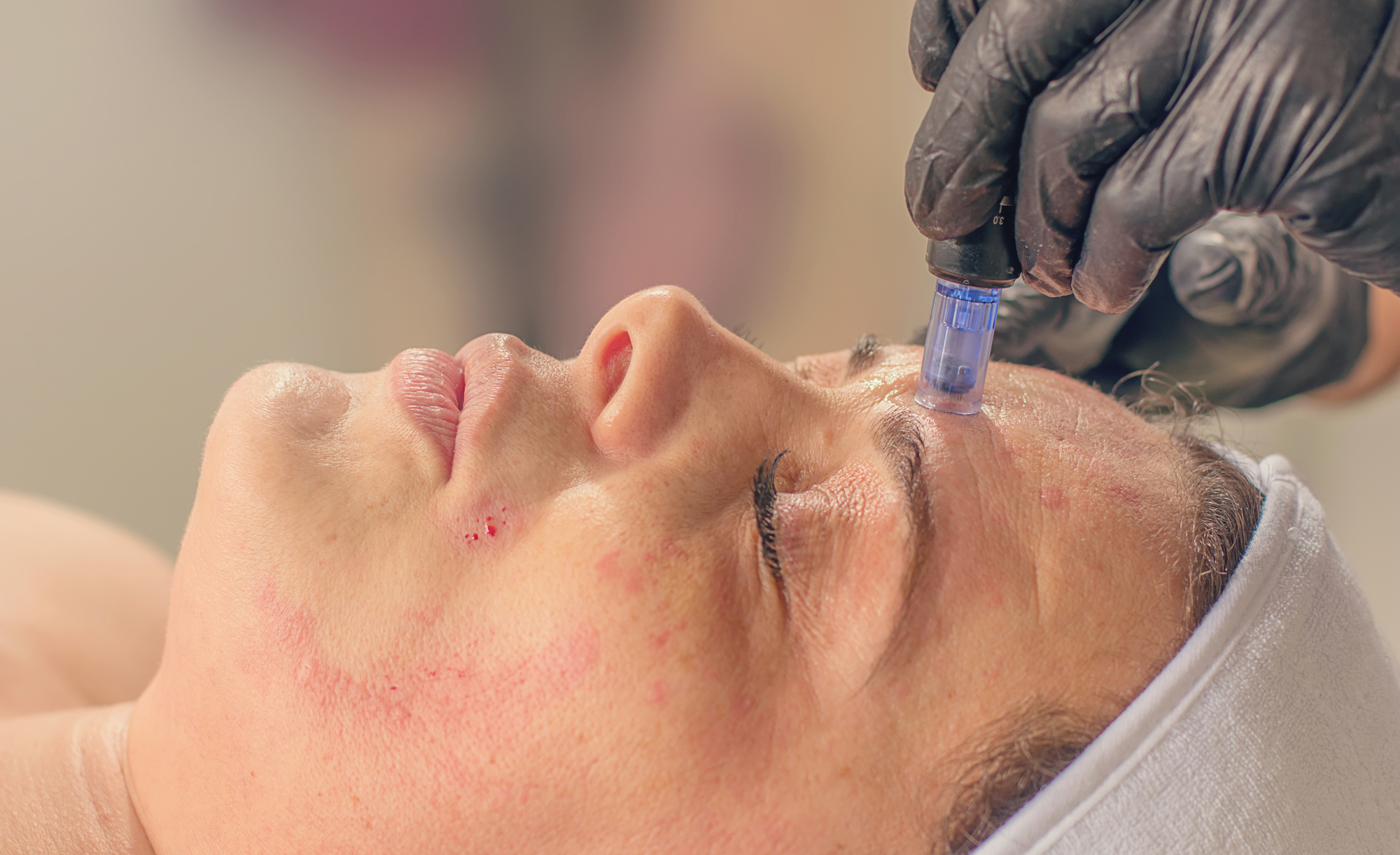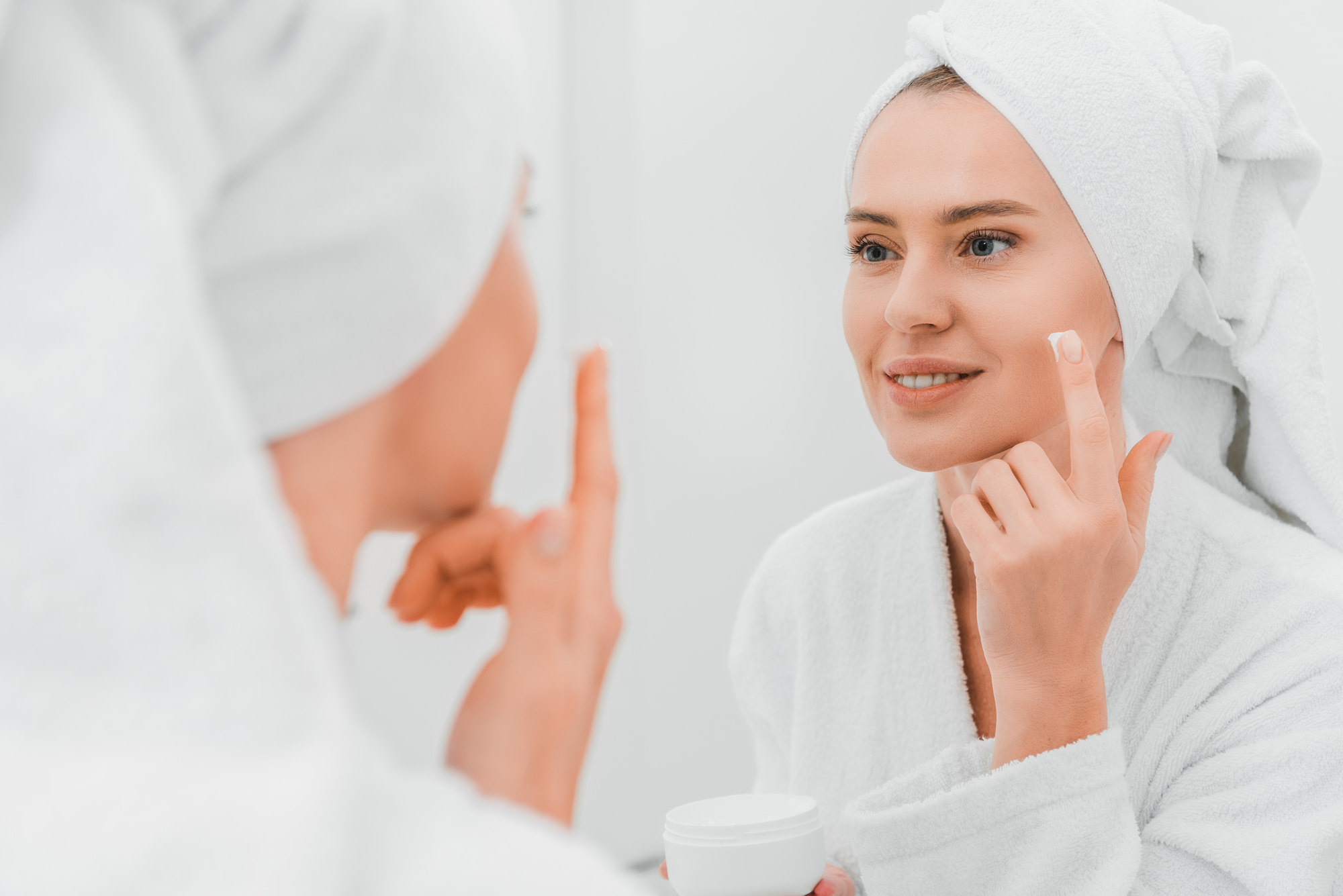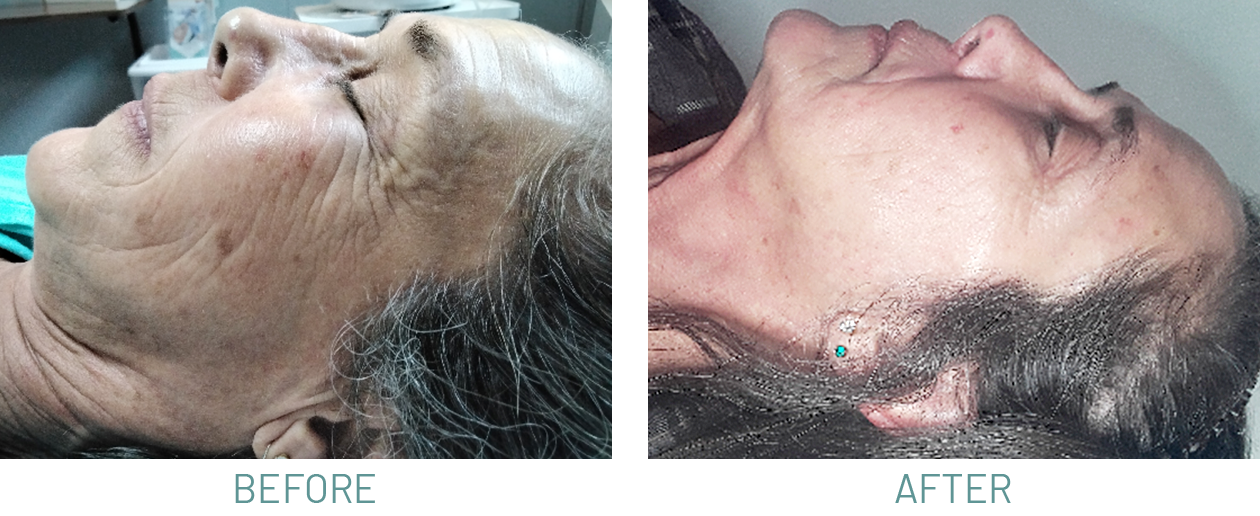
Microneedling Denver
$125-285 PER SESSION
The Dermapen® is a microneedling device that tightens, lifts, and rejuvenates the skin. Microneedling is similar to acupuncture in that it uses tiny needles to penetrate the skin, but unlike acupuncture, micro-needling is specifically designed to reduce skin blemishes, such as acne scars, wrinkles, fine lines, stretch marks, and more.
Microneedling has been used in Europe for decades, and Dermapen® was introduced in the United States in 2010. These treatments are also known as collagen induction therapy (CIT) and fractional microneedling.

Benefits Of Dermapen® Microneedling
There are quite a few treatment options when treating various skin conditions and blemishes. However, microneedling is arguably one of the most effective treatment solutions available. The following are just a few of the benefits of Dermapen® microneedling:
Reduces fine lines and wrinkles
Reduces the appearance of hyperpigmentation (from acne)
Improves the appearance of acne scars
Tightens, lifts, and rejuvenates the skin
Reduces pore size
Enhances the absorption of topical products
Improves overall complexion
HOW DOES MICRONEEDLING WORK?
Microneedling involves creating tiny columnar wounds (also known as microchannels) in the skin. These small, barely noticeable puncture wounds stimulate new tissue, collagen, and elastin growth, all of which help to improve the skin's texture, tone, and overall appearance. Microneedling does this without the potential heat trauma and cost of laser treatment. This means that microneedling tends to be less painful, more effective, and easier to quickly recover from.
Unlike older generations of microneedling rollers, the Dermapen® utilizes an automated, spring-loaded, 11-microneedle device to stamp the skin vertically. The depth of the "stamp" can be adjusted based on the specific need, which enables practitioners to customize treatments and target key areas. As a result, the Dermapen® is just as effective when treating deep acne scars as it is treating superficial wrinkles.
What Is The Difference Between Derma Rolling And Microneedling?
Derma rolling is another form of microneedling, but it requires the use of a derma roller—a handheld device that is rolled over the skin in order to puncture the skin with needles. Although derma rolling is meant to achieve the same results as a Dermapen®, it's not nearly as effective. The following is a brief breakdown of the differences between a derma roller and a Dermapen®:
Needle Size
Derma rollers come in different needle sizes, from 0.20 to 1.5mm. Dermapens® are available in essentially the same needle sizes, but they go deeper into the skin thanks to their automated, vertical stamp-like action. Derma rollers are less precise, even if the same needle sizes are used; they do not go as deeply, due to the way they enter at an angle as a result of the rolling motion used to apply the punctures.
Motion
Another critical difference between a derma roller and a Dermapen® is the motion they use to puncture the skin. A Dermapen® uses a vertical stamping motion to create tiny puncture wounds in the skin, while a derma roller is rolled horizontally over the skin to produce these microchannels. The stamping motion used by a Dermapen® is much more precise, which allows it to target specific areas and create a more even treatment.
The rolling motion of a derma roller, on the other hand, will affect areas of the skin that may not need treatment. It's much less precise and can cause unnecessary trauma to areas of the skin that do not require treatment.
Pain Level
The size of the needles and the motion used to puncture the skin also affect the level of pain associated with each treatment. A derma roller tends to be more painful than a Dermapen®, as its larger needles create more puncture wounds and require the user to roll it over the skin. Additionally, because of how it's rolled over the skin, the punctures are made at an odd angle, making it more likely to leave bruises and scarring. A Dermapen®, on the other hand, is much less painful and only requires a few quick stamps to create tiny puncture wounds.
Duration
The duration of the treatment is also an essential factor to consider when choosing between a derma roller and a Dermapen®. A derma roller treatment typically takes longer than a Dermapen® treatment, as it has to be rolled over the skin to create the microchannels, and it can be trickier to treat more difficult-to-reach areas. A Dermapen® treatment, on the other hand, allows for a much quicker and more precise treatment.
Transepidermal Delivery (TED) With Microneedling
If you look at the skin after treatment on a microscopic level, you would see thousands of microchannels in the skin. These tiny channels act as a conduit for the TED of enhancing topical preparations, such as growth factors and peptides, at the skin's cellular level. Growth factors and peptides are the building blocks for new collagen and elastic tissue development.
At Natural Skincare Clinic, we can deliver AnteAge Growth Factor serums directly to the skin's cellular layer via the microchannels created during Microneedling treatment. This serum must be delivered during treatment because timing is of the essence; the microchannels that are created will begin to close up within 60 minutes!
The benefits of adding the AnteAge Growth Factor serums via TED are:
Firmer-looking skin with renewed rejuvenation
Softer appearance of fine lines and deep wrinkles
Improves skin damaged by photoaging
Faster recovery of skin appearance following Dermapen® procedures
Increased hydration for softer skin
Pre-Treatment Preparation For Microneedling
Once you schedule a microneedling treatment, you'll want to ensure your skin is in a calm state before your appointment. This ensures that your treatment will be as effective as possible and help prevent or reduce potential side effects, such as swelling or skin irritation. With that in mind, use the following tips to prepare your skin for microneedling:
- Avoid exfoliating: Avoid using any exfoliating products or treatments for a few days before the treatment. Otherwise, this will further irritate the skin and increase sensitivity.
- Stay out of the sun: Spend as little time in direct sunlight as possible a few days before the treatment. Sun exposure can increase the risk of skin irritation during the treatment. Damaging your skin may make the microneedling more painful and make the treatment less effective. If you go outside in the sun, use high-SPF sunscreen.
- Cleanse your skin: You'll want to ensure your face is properly cleansed before the microneedling treatment. This will help get rid of any dirt and debris that may negatively affect the treatment's effectiveness.
- Hydrate: Drink plenty of water before and after the treatment. Proper hydration ensures that your skin is healthy, which will help create better results from the treatment.
- Avoid pain relievers: Don't take any pain relievers medication like ibuprofen or aspirin before the microneedling treatment. These often thin out the blood and can lead to more bruising or bleeding during the treatment. You should also avoid topical retinoids and antibiotics for at least a week before your appointment, as these can interfere with proper healing following treatment.
What To Expect During A Microneedling
A microneedling treatment with a Dermapen® is relatively quick and easy. First, a mild numbing agent will be applied to the skin to ensure a comfortable treatment. Once the numbing agent has taken effect, it will be wiped off. Your skin will then be cleansed using alcohol to reduce the potential risk of infection (a risk present whenever a needle is inserted into the skin).
Once your skin has been prepped, the Dermapen® will be used to create tiny needle pricks on the skin. The needles enter and exit the skin quickly, making for a relatively painless treatment. The depth of the needles will be adjusted based on how thick or thin the skin being treated is. Once the treatment is complete, a serum or cream will be applied to help reduce redness or swelling and stimulate collagen production.
The entire session should take less than an hour, with the actual treatment taking 20 to 30 minutes at most to complete.
How To Maintain Results After Your Microneedling Session
To ensure that your treatment results last and your skin continues to heal and improve, take care of your skin following the appointment. The following tips will help you maintain the benefits of your microneedling treatment:
- Wear sunscreen daily: Sun exposure breaks down collagen and elastin, both of which are crucial for healthy, youthful-looking skin. To protect your skin from the sun's UV rays and maintain microneedling results, wear a broad-spectrum SPF of 30 or higher.
- Avoid heat: Avoid strenuous exercise or exposing your skin to hot water for at least a couple of days following treatment.
- Be gentle on your skin: First, don't pick or scratch your skin. This can irritate the healing process and make it hard for your skin to heal correctly. Additionally, use gentle cleansers that don't contain harsh ingredients like alcohol or fragrance to avoid further irritation. Avoid scrubbing your skin or using any exfoliating products for at least a week.
- Moisturize regularly: Keep your skin hydrated and moisturized. Applying a light, hydrating moisturizer will help keep your skin healthy and nourished and can also help reduce the amount of redness and inflammation.
- Avoid chemical peels or other invasive treatments: For at least a month after your microneedling session, avoid any other treatments that can disrupt the regeneration process.
Contraindications Of Microneedling
As effective as microneedling can be, it's not for everybody. If you have any of the following issues, then you should avoid microneedling:
- Active acne: Since microneedling makes tiny channels in the skin, it can worsen active acne by spreading the bacteria that causes it.
- Localized infection in the treatment area: If there is an infection in the treatment area, microneedling can actually make it worse by allowing it to spread and become more severe.
- Active herpes labialis and warts: Similarly to acne, microneedling can cause the spread of these infections. It can also cause post-treatment outbreaks.
- Chronic skin diseases: Microneedling may cause flare-ups of chronic skin conditions such as rosacea, psoriasis, and eczema by aggravating the skin.
- Patients with extreme keloidal tendencies: Keloidal scarring refers to the formation of a buildup of scar tissue in the treated area. If you have a propensity for keloidal scarring, then microneedling is not recommended.
Microneedling Before & After Photos
BOOK A COMPLIMENTARY CONSULTATION
Commonly Asked Questions
The following are some of the general questions you might have about microneedling:
Because microneedling involves using a series of small needles, you might assume that the procedure is painful. However, this is rarely the case. At most, you may feel slight discomfort. Most people rate the treatment at a 2-4 out of a 10-pain scale. And much of it depends on your sensitivity to pain and the technician's skill. For example, areas around the eyes and forehead are more sensitive than the rest of the face. In addition, a fast-acting topical anesthetic is applied to the skin just before treatment to help increase comfort levels.
Benefits can be seen and felt after just one treatment. However, we typically recommend 4-6 treatments, spaced 4-6 weeks apart, for optimal results. Generally speaking, it depends on the condition you're treating and its severity. For example, when treating acne scars, more treatments may be needed for more improvement. The number of treatments required can be determined during a Complimentary Consultation.
Immediately following the treatment, your skin will be red and possibly have some minor, pinpoint bleeding, depending on how aggressive the treatment was. Because of how sensitive your skin will be after treatment, you won't be able to wear makeup for at least 24 hours. You may also experience minimal swelling on day one that can become more noticeable on the second day. However, most of the redness and swelling will subside by day three.
A post-treatment product regimen will be prescribed for you to use at home.




